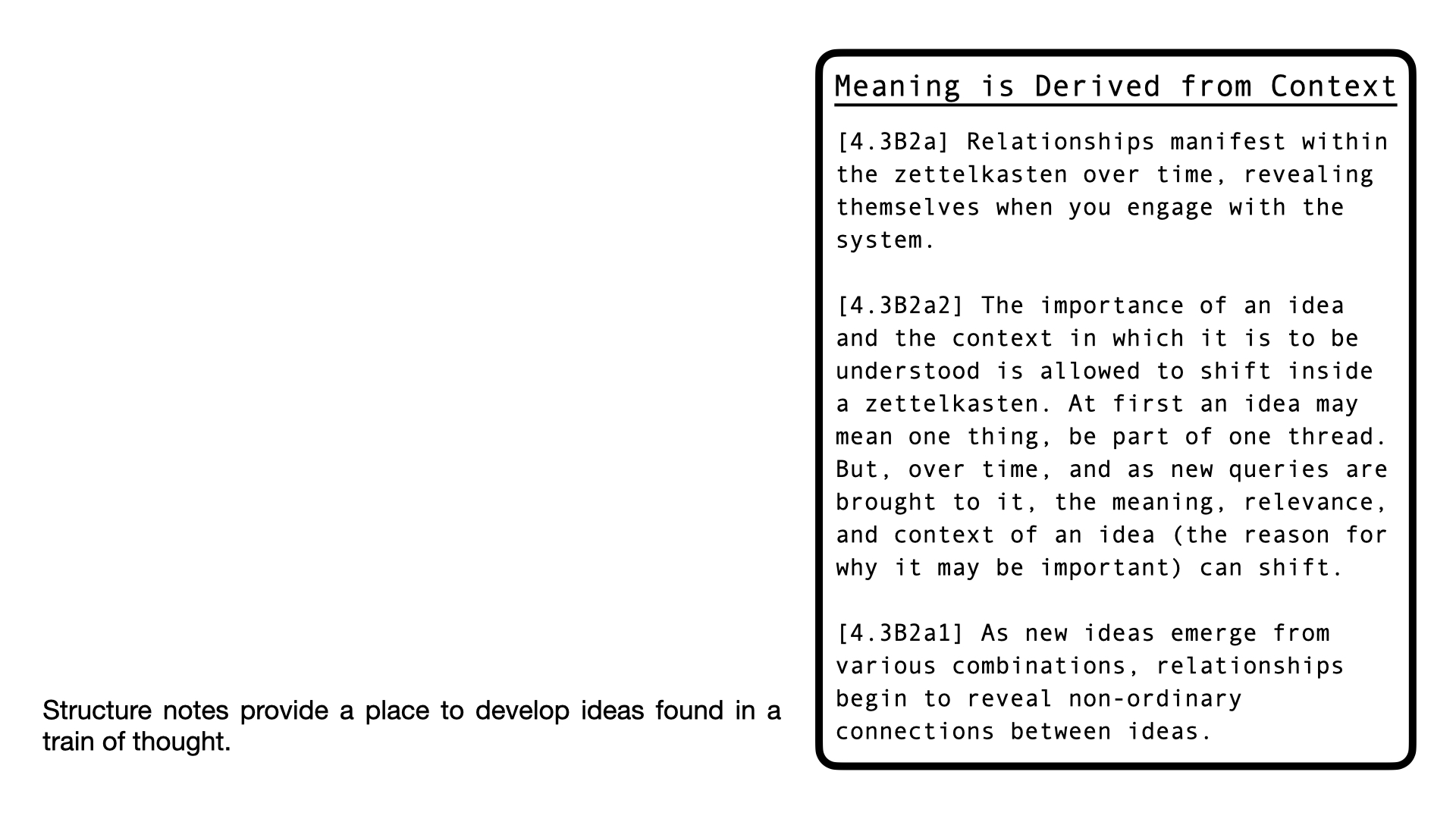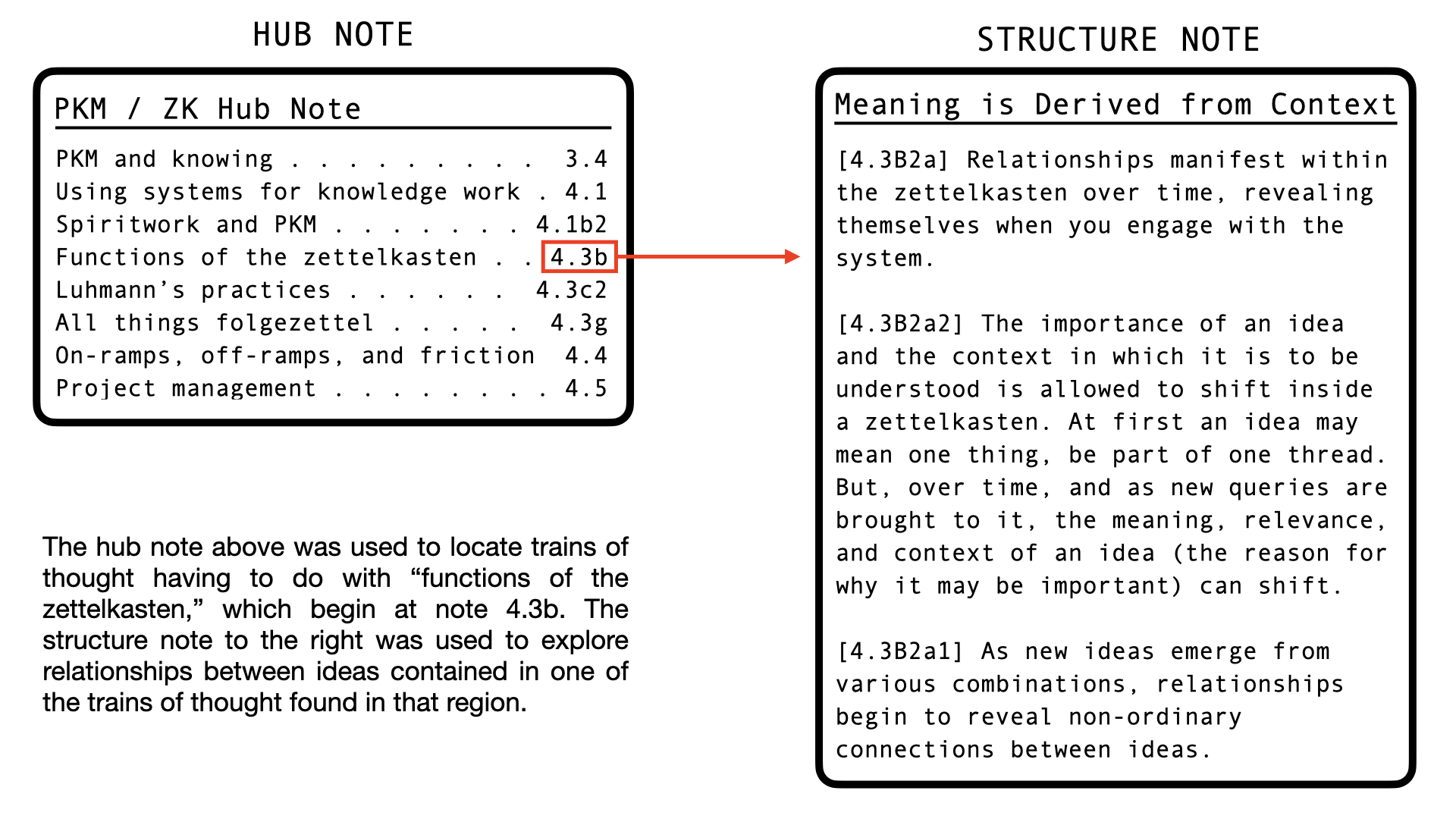The Difference Between Hub Notes and Structure Notes Explained
Hub notes and structure notes don't get a lot of attention in the zettelkasten discourse, especially in comparison to reference notes and main notes. This lack of airtime has led to misunderstandings about what hub and structure notes are, what their function is, and whether the terms can be used interchangeably (they can't). To clear things up, we'll look at what distinguishes these notes, as well as how they work together to help you find and develop ideas in your zettelkasten.
For more on how these and other notes fit into your zettelkasten, check out my latest book A System for Writing: How an Unconventional Approach to Note-Making Can Help You Capture Ideas, Think Wildly, and Write Constantly.
Notes for Finding Notes vs Notes for Developing Ideas
A Luhmann-style zettelkasten is intended to help you develop your thinking, reveal unconventional combinations of ideas, and write...very often. Through the addition of new notes, connections are made that, over time, develop into trains of thought. A train of thought is a sequence of ideas found in your zettelkasten established when notes refer or link to one another. Hub notes help you find these trains of thought:

By pointing to where particular trains of thought can be found, indicated by the first note in the sequence, hub notes make it easy to find areas of your zettelkasten you'd like to explore. They provide a jumping off point, a place to begin your explorations. But, finding trains of thought is not the end of the thinking or writing process. At some point, you'll want to develop the ideas that make up your trains of thought so you can write about and think more on them later.
Structure notes are places to organize and "structure" the ideas that make up the trains of thought pointed to in your hub note, allowing you to arrange ideas in ways that make sense for your argument, edit copy, and add new ideas.

The ideas found in your zettelkasten are not organized hierarchically, as if in an outline. They are not organized by top-level categories, nor are they organized semantically, as they would in a piece of writing. To create coherent arguments, you'll need to unpack your ideas and examine their relationships to one another. Your structure notes are where you can organize and flesh out your thinking.
How Hub Notes and Structure Notes Work Together
All note types associated with the zettelkasten work together, establishing a symbiotic relationship between their functions. Hub notes and structure notes are no different.
Let's say you're interested in seeing how thoughts related to "PKM and Zettelkasten" have been developing in your slip box. Pull out the hub note that deals with this topic, look to see if any of the developing trains of thought interest you, and dig into the region of your slip box where that train of thought can be found.
Once you've found an aspect or angle of the train of thought you'd like to develop into writing, create a new note—a structure note—bringing in the different ideas related to this particular sequence, arranging them in a way that makes sense to you.

Next, add thoughts on how the ideas relate to one another, write in new paragraphs, and/or drop in questions regarding things to look into later. Below is the same structure note as above, further developed. Notice how the ideas have be rearranged (indicated by the alphanumeric IDs). Also notice that connections between ideas have been made more explicit.

Looking at the example above, it's clear that book and article outlines can begin to take shape in the structure note before they make it into your writing document. This is one of the beauties of structure notes—not only can they help you better understand your thinking, but they can be a catalyst for new creative work.
Different Notes for Different Purposes
The different note types associated with a Luhmann-style zettelkasten help you perform different functions. If you simply want to locate, read through, and explore different trains of thought developing in your zettelkasten, use hub notes to find the source of what you're looking for. If you want to better understand your ideas by organizing them into coherent arguments that can be used for writing and thinking, use structure notes.
In all instances, happy note-making.
Coming up: "The Difference Between Hub Notes and the Index Explained"